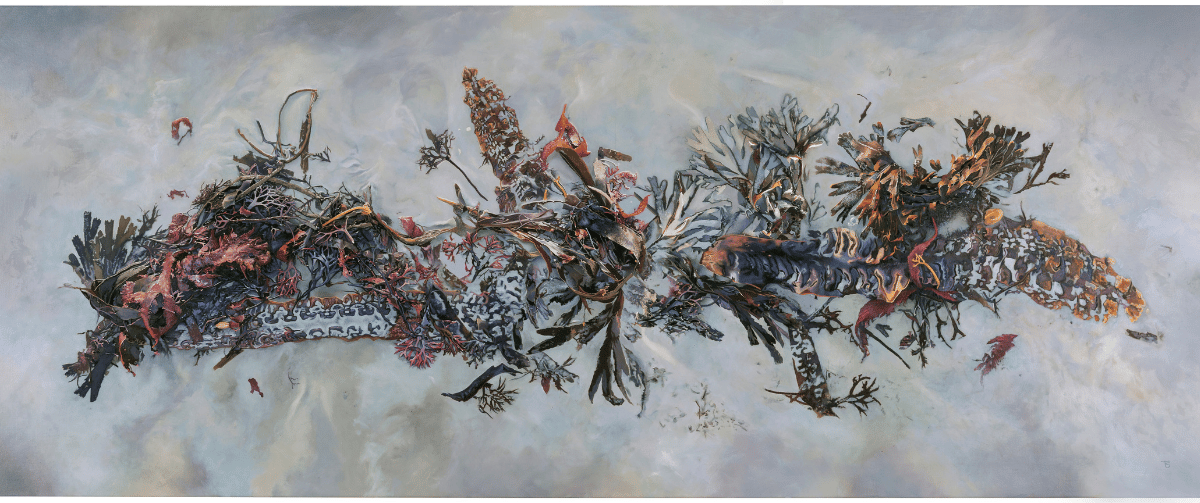Worthing Museum’s latest exhibition showcases work from local artist Trevor Scobie. Presenting his Tidal collection, visitors will be captivated by Scobie’s intricately detailed and hyperrealistic seascapes. We talked with Scobie about his work and this exhibition.
About Trevor Scobie
Brighton-born Scobie attended the Sussex College of Design in Worthing in the 70s. After graduating he moved to London where he worked in publishing, designing and illustrating book covers for many years, including covers for James Bond novels. “To this day I still get collectors who ask me to sign the covers of these first editions.” Scobie said.
This work often meant designing and painting to a specific brief, so as Scobie neared retirement he decided that he wanted to create work that was more organic and aligned with his personal interests. “I started with just normal landscapes, and then one day I went to Blackrock in Brighton and that’s when I knew I’d found my subject,” he said. “It goes back to my childhood, I loved rock pools as a child. I bring that wonder into what I see today. And for the last 15 years the rest of the work has followed.”
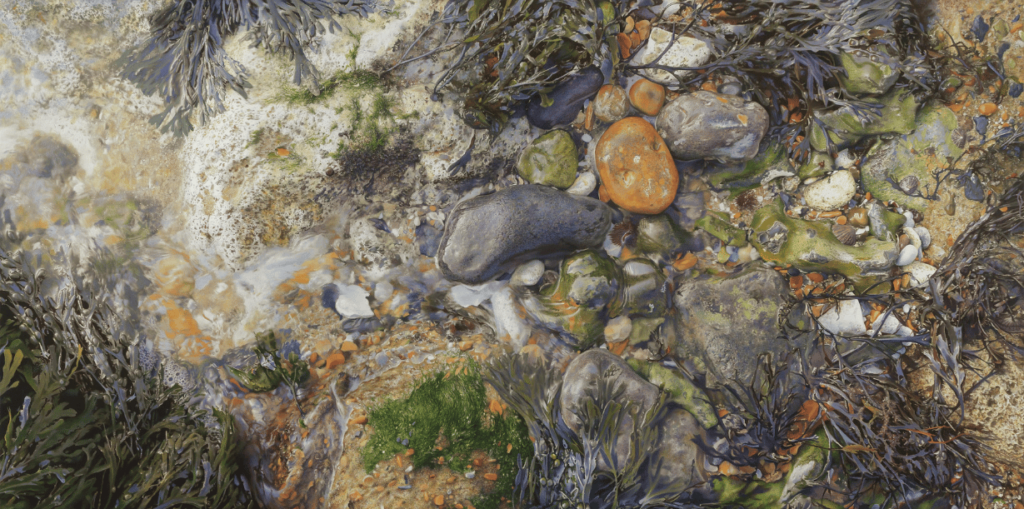
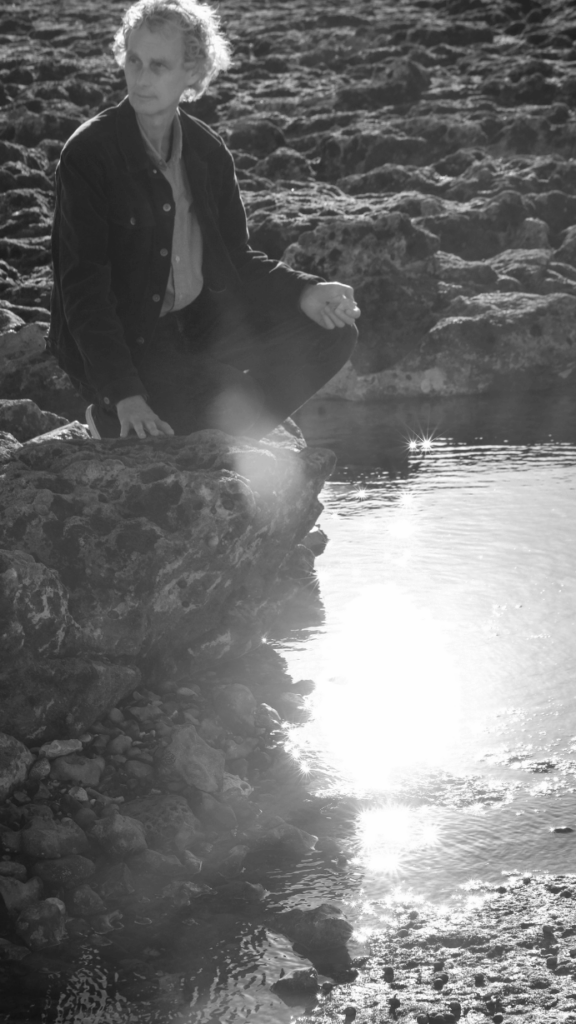

Inspirations and Artistic Process
Subject
The work in Scobie’s exhibition focuses on two main subjects; firstly his detailed studies of rock pools and seascapes, and secondly a fascination with the texture and surfaces of stone and flint. Local geology features heavily in his work and the exhibition includes two cabinets of stones, flints, shells, and stone tools that inspire his work.
Scobie has had a life-long interest in the local landscapes and geology. As a boy he would go hunting for fossils on the South Downs. He even found a stone-age tool, which Worthing Museum’s archaeology curator, James Sainsbury, has said is likely to be a real artefact. The tool is featured in one of the cabinets, and is the subject of Scobie’s painting Flint Contemplation 1. His interest in flints and flint tools led him to exploring the process of flint knapping. Sussex is renowned for flint tools, particularly in Boxgrove, Chichester and his interpretation of the geology of this area is also featured in the exhibition.
Style
Most of Scobie’s exhibited work is in his hyperrealistic style. In his rock pools he reproduces the intricately fringed texture of sea plants, as well as the differing glistening, rough, or craggy quality of rocks, pebbles and shells. Some pieces, such as Incoming Tide include a view through water, with Scobie capturing a distorted view of the seabed beneath a calmly rippling surface.
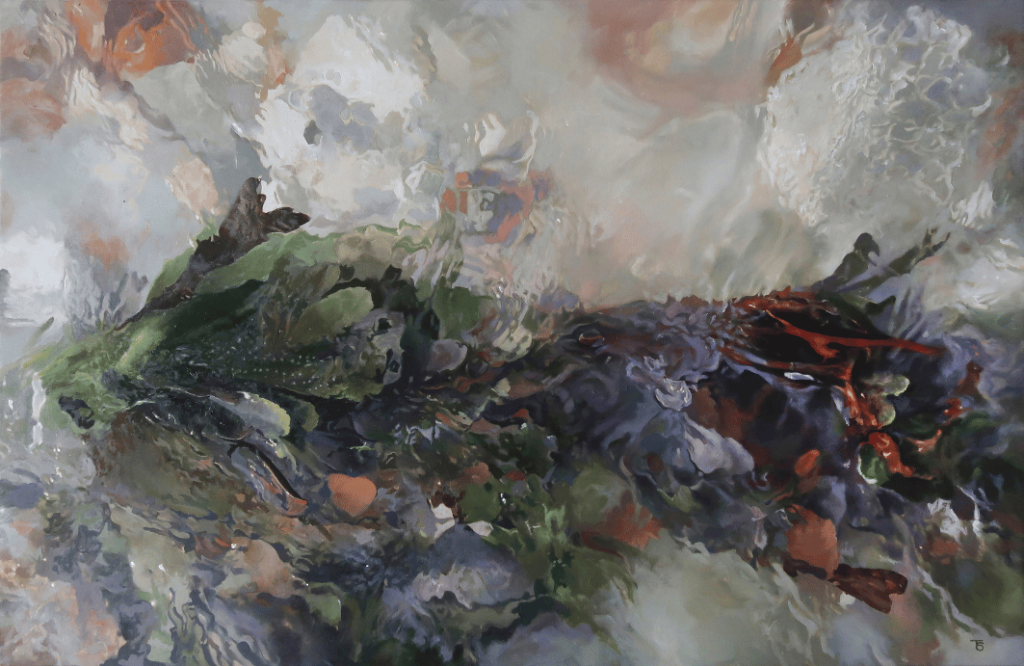
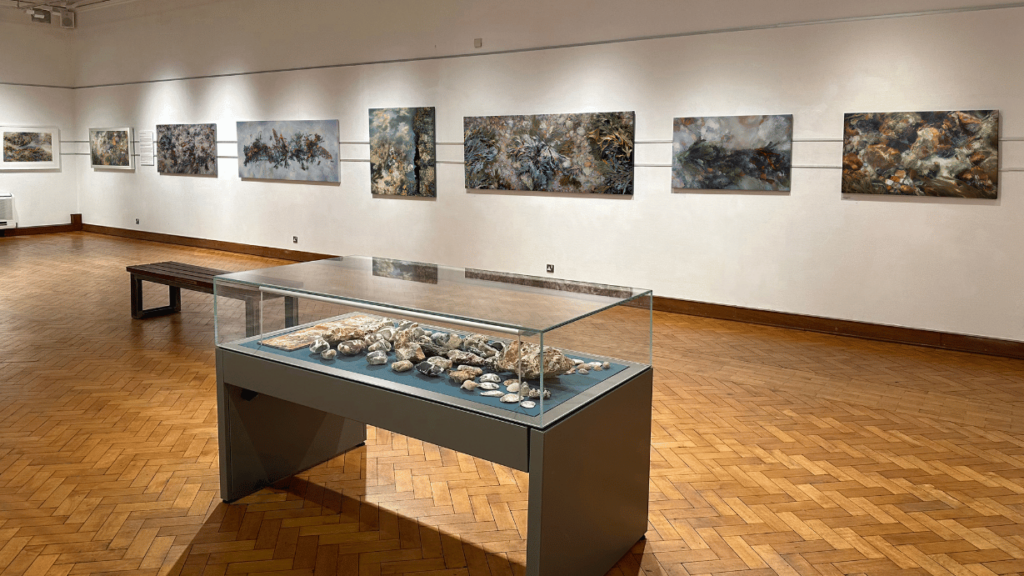
His studies on chalk and flints capture both the glassy texture of smashed flint, and the malleable softness of chalk cliffs. “I went to Seven Sisters and I got the tide wrong… But then I turned around and in the cliff wall were all these flints that were shattered but sticking out of the cliff. I was inspired by the way they had shattered, and the details in them. So I became interested from that point in exploring flints, creating a whole collection of flint artworks.”
Process
Viewers may find Scobie’s rock pools to be both familiar, yet also otherworldly. Anyone who spent time as a child crouched over a rock pool will recognise the scenes, but their dream-like quality comes from Scobie’s process itself. Many of his scenes are from different elements found then brought together in the final composition. Each painting captures a moment in nature, celebrating the beauty of its impermanence.
Scobie heads out to the beach all year round, and tends to take photographs and sketches to inform his detailed work. However, he always looks forward to a specific tide in February; the second full moon of the year, known as the Snow Moon, causes the low tides to go out twice as far. Walking out on these tides has afforded him many inspirational moments.
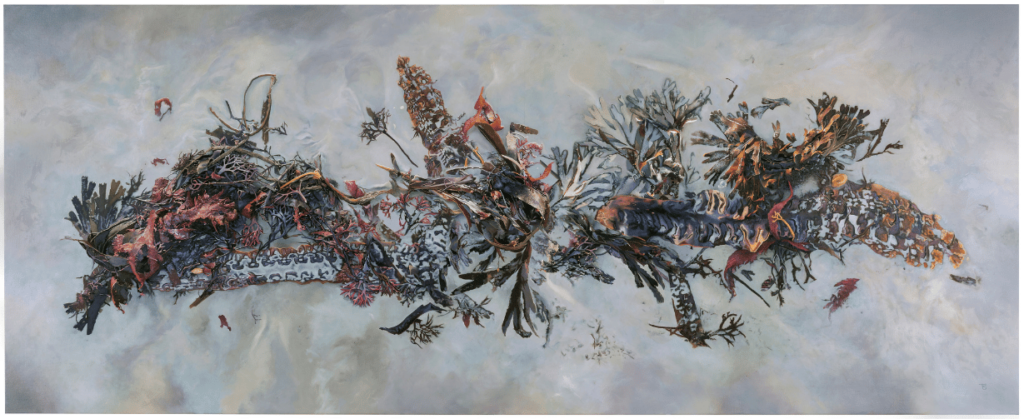
Creating his seascapes and detailed geological paintings is a lengthy process, and Scobie only works on one piece at a time. “I like working with very fine brushes and it takes many hours. Some artists work very quickly, but I can easily take 3 – 4 months on one painting.”
Other pieces in the exhibition differ in their style, but follow Scobie’s interest in seascapes. These are his ‘coastal impressions’. He says he likes to experiment and try different ways of working as a break from his normal intensive and detailed process.

Influences
Scobie has always loved detail in master artworks. Two artists he admires are American realist painter Andrew Wyeth and Dutch painter Lawrence Alma-Tadema. Closer to home, Scobie was deeply influenced by one of his tutors at West Sussex College, Anthony Cooke.
“He has sadly passed on now, but he inspired me a lot. Tony did oil paintings – he was actually colour blind – so his work had colour in it but they were monochromatic. He had a beautiful style and I really admired his work. Years later I came in here [Worthing Museum] and his daughter had put on a retrospective of his work. It feels full circle that I get to exhibit in the same room.”
You can see more of Scobie’s work on his website. Scobie’s Tidal collection will be on display at Worthing Museum until Sunday 25th August. Please see the website for Museum opening times.

